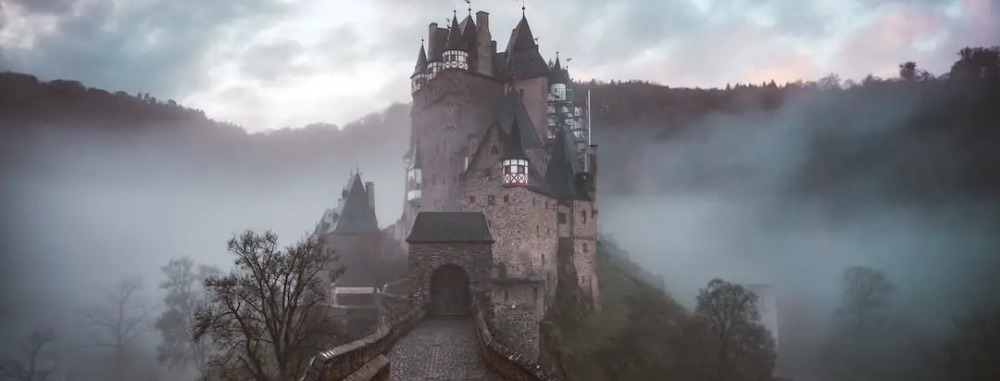Haunted Castles of Europe
Even without spectral forms haunting the hallways, castles can be creepy. From the lairs of Transylvanian vampires to the homes of mad scientists creating human monsters to just having your rather insane, not quite dead wife stashed up in the attic, these manor homes and crumbling keeps have plenty of history so it is no wonder there are plenty of spirits still trying to call them home.

From the moors of Northumberland to the Loire Valley in France to the deep woods of Eastern Europe, plenty of palaces have given overnight visitors, occupants, and paranormal investigators many tales to tell about the ghosts that never left their royal homes. Whether encountering the ghost of a famous figure or the astral specter of an unknown person, there are plenty of great castles that will give any visitor a good fright this Halloween.
Bojnice Castle
Haunted Castle in Bojnice, Slovakia
Filmmakers have used this castle to set the stage for many fantasy or fairytale stories due to the mix of Romantic, Renaissance, and Gothic architecture. Built sometime before 1113, the castle was originally a wooden fort and saw different architecture added on throughout the years until it slipped out of family possession in 1910. It was confiscated by the Soviets in 1945 and now is a museum attracting 200,000 visitors a year. However, there is a dark side to this fairytale castle.
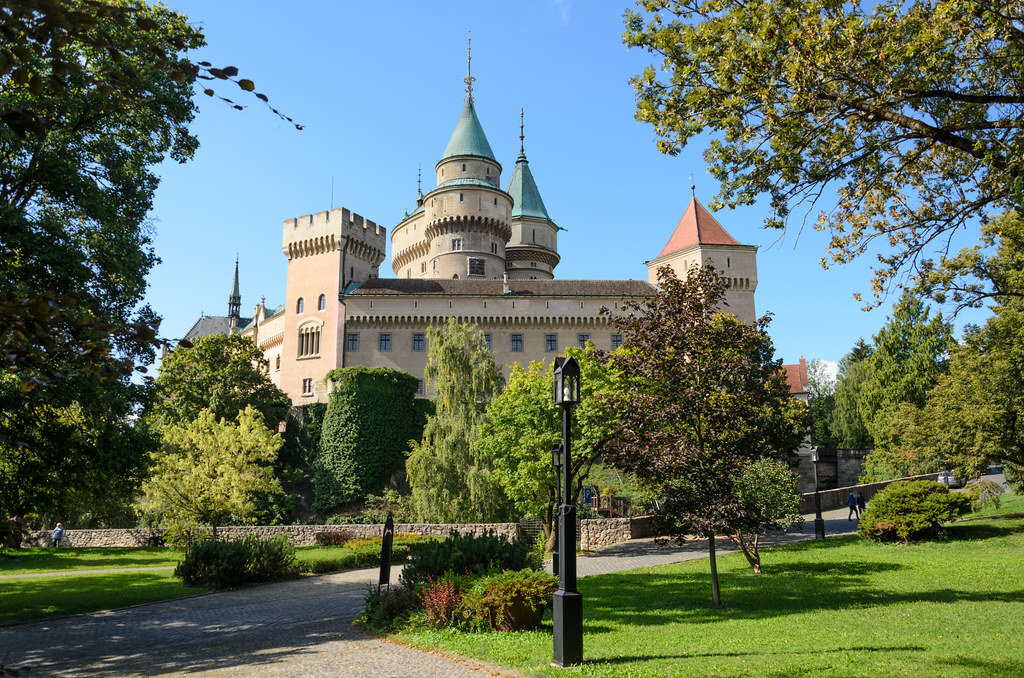
Each year, the castle hosts a festival of Ghosts and Monsters in April and May to explore the darker side of the castle’s history. According to legend, one of the most powerful families who called the castle home were also practitioners of black magic, wizards who adopted a crowned black snake as their symbol. One ghost said to haunt the castle is the Black Lady, the wife of a lord of the castle known for her virtue. However, this left her with many enemies who told her husband she had betrayed him, leading him to try and kill her. In her attempts to evade him, she jumped with her child out of a window into the castle moat. She apparently disappeared into black smoke and now haunts the castle. Another ghost is Petr Poky, the greedy head of the castle’s servants who was cursed for tricking a wizard. There are records of a servant named Petr Poky being drawn and quartered on the castle grounds in 1496, lending credence to the tale of the apparition.
Château de Brissac
Haunted Castle in Brissac-Quincé, France
Originally built in the 11th Century by the Counts of Anjou, this noble mansion in France’s Loire Valley has survived wars, revolution, and royal intrigue and is the home of the Iron Chef France battles. At seven stories, it is the tallest home in the Loire Valley and hosts an annual theater festival to show off its amazing décor and architecture. With such a lengthy history, it should come as no surprise that there are a few ghosts said to be milling about in the chateau.

The most famous ghost is La Dame Verte, or the Green Lady, which is said to be the murdered Charlotte de France, a young woman who was killed in the tower’s chapel and now walks the castle in her famous green dress. Charlotte was killed by her husband, some after being caught with her lover while others say after being wrongfully accused of having an affair.
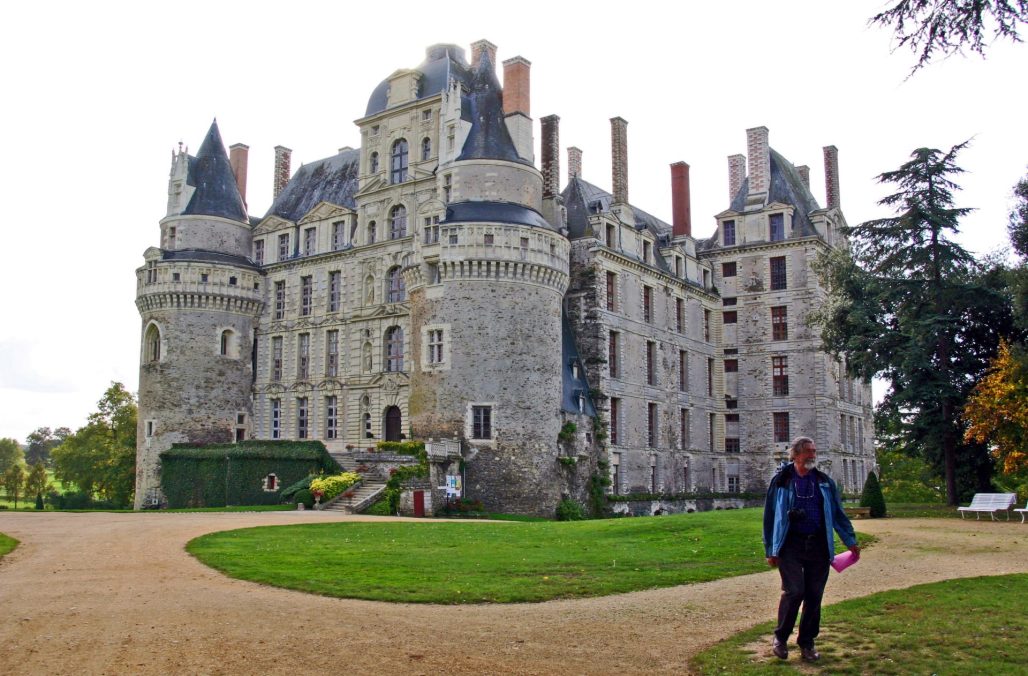
Known for washing her long, red hair and the green dresses she wore to set it off, Charlotte is often seen combing or washing her hair in the castle. She has given more than a few frights to male visitors as she stalks the chapels and seems to prefer tormenting men, though female visitors have heard her voice and painful moans.
Chillingham Castle
Haunted Castle in Chillingham, England
The aptly named Chillingham Castle is located in Northumberland and is the ancestral home of the Earls of Tankerville. In addition to the Chillingham Wild Cattle, the castle is also home to a few spirits. Originally a monastery built in the 12th Century, the castle was turned over to noblemen a century later who added on battlements, a banquet hall, a library, and extensive gardens.
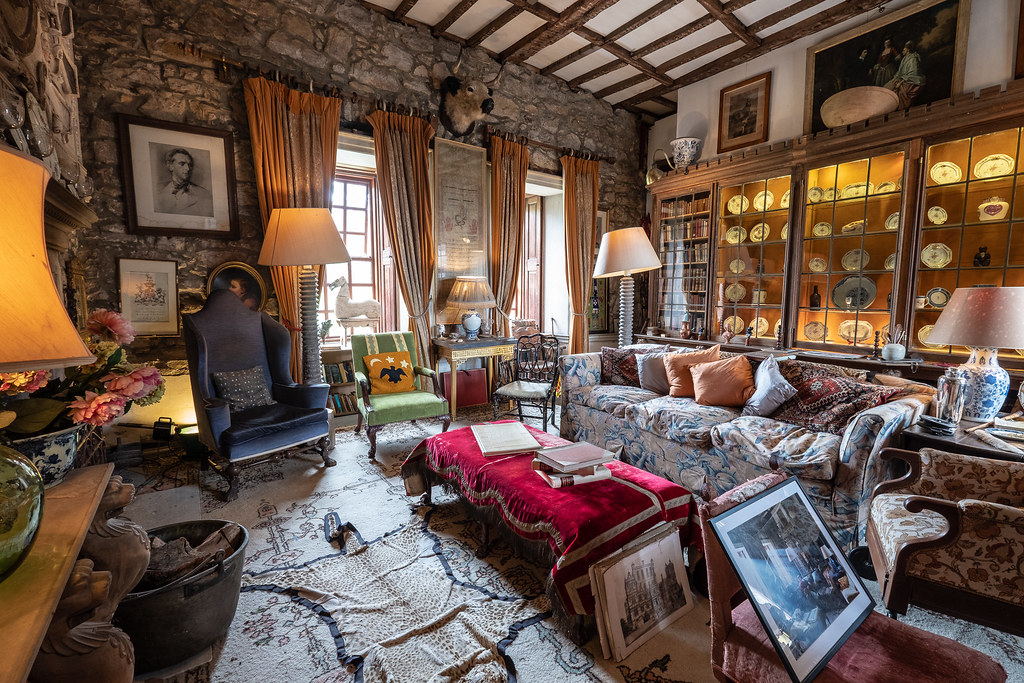
Now, the castle is marketed as one of the most haunted places in England and ghosts have been written about in the castle since at least 1925 which led Alfred, Lord Tennyson to write a few creepy poems.
The most famous ghost is the “Blue Boy,” who haunts the pink room in the castle. Guests have reported seeing blue flashes of light or a blue halo over their heads while sleeping in the room.
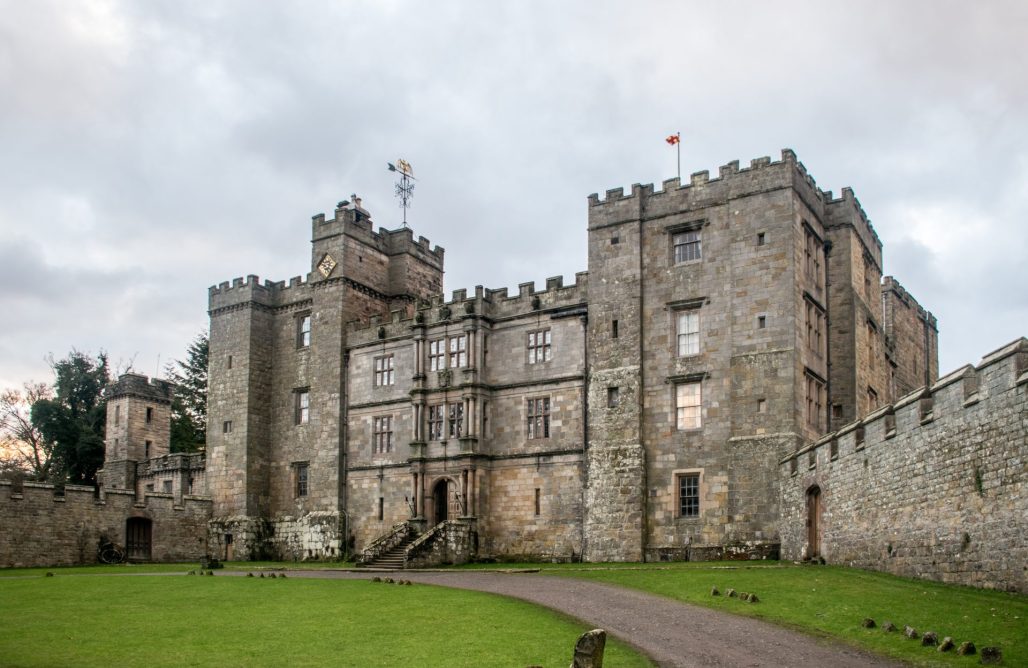
The hauntings apparently began after workmen discovered a young boy buried inside one of the room’s walls. A pale lady in white haunts one of the pantries, begging for water. Disembodied voices are heard in the chapel of the castle and various ghosts are reported walking about the castle courtyard after nightfall. Various orbs and cold spots have also been spotted throughout the castle.
Dragsholm Slot
Haunted Castle in Hoerve, Denmark
This slot – which means “castle” – is one of the oldest in Demark, dating back to about 1215, and was named for the islet or “drag” where it is located. Now run as a hotel and restaurant, the castle managed to survive years of war and even an attempt to blow it up. It was built by a Catholic Bishop and was used as a prison for nobility and religious figures for years, most famous for the Earl of Bothwell who was the third husband of Mary, Queen of Scots. According to some, the Earl never really left the castle.
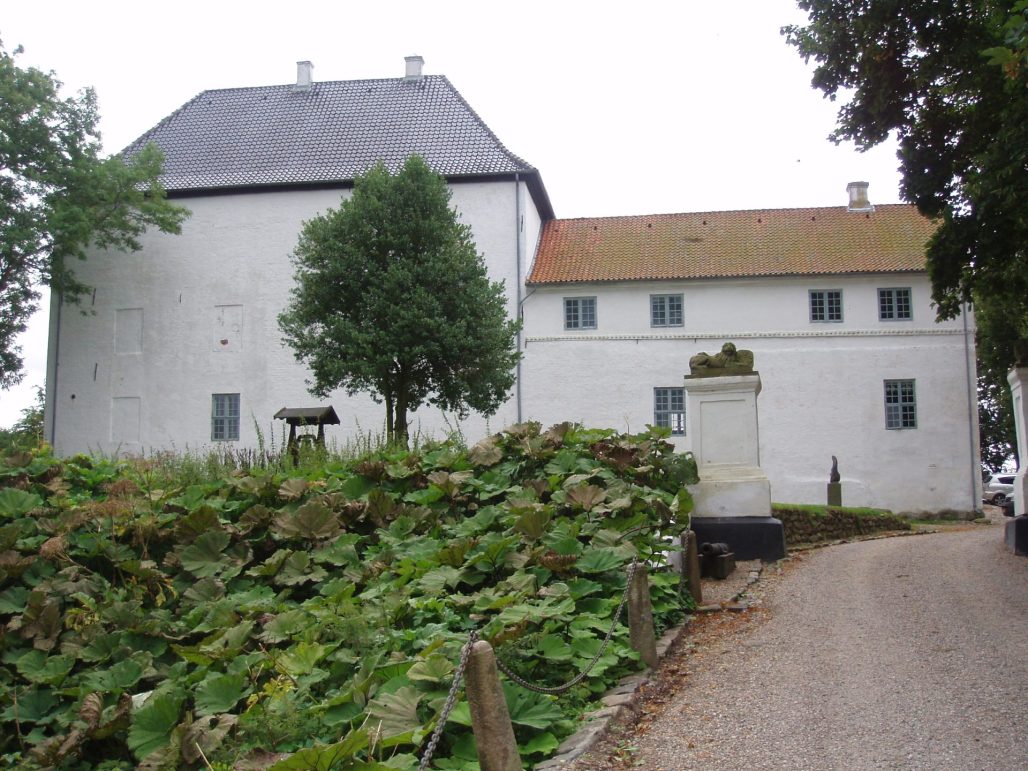
Numerous witnesses and psychics have claimed three ghosts haunt the halls of this Danish castle. The Earl of Bothwell is one, who is said to ride into the castle courtyard on a ghost horse and carriage. A gray lady and a white lady are also said to roam the castle halls. The gray lady is believed to be a servant who was employed at the castle and was so grateful to her employers that she remained at the castle, cleaning up and checking on the premises to make things run smoothly. She visits on a nightly basis and is most often encountered by staff. The white lady is believed to be the daughter of a nobleman who lived in the castle and was imprisoned after her father discovered she was having an affair with a commoner. In the 1930s, indoor plumbing was installed in the castle and the skeleton of a young woman in a white dress was found buried within the castle walls.
Edinburgh Castle
Haunted Castle in Edinburgh, Scotland
It was to this legendary Scottish castle that the aforementioned Mary, Queen of Scots often fled to safety like many Scottish monarchs before her. Edinburgh Castle stands on Castle Rock, an extinct volcano that dates back 350 million years ago. For longer than recorded history there has been some type of fortress or castle on top of the rock with the first mention of the fortified structure as early as 80 A.D. Originally called the “Maiden’s Castle,” it took the name of the surrounding city in the 1500s and once held a shrine to the famed enchantress Morgan le Faye. All Scottish kings and queens were crowned there until James I of England, the son of Mary, Queen of Scots. He was born in the castle where Mary had fled to avoid her abusive second husband who she later murdered by Bothwell. The dark, often cloudy skies over Edinburgh further add to the gothic history of this castle.

Several ghosts have been reported at Edinburgh Castle over the years. A phantom piper sometimes roams the grounds, and a headless drummer has been reported in the castle since 1650. The spirits of Frenchmen captured in the Seven Years’ War and colonial soldiers from the American Revolution who were kept prisoner in the castle still occupy the dungeons. Even a ghost dog roams the dog cemetery, a piece of the castle dedicated to the canines that have fallen in service for Scotland. Janet Douglas, Lady of Glamis was imprisoned in the castle in 1537 on accusations of witchcraft and was burned at the stake on the castle grounds. Hollow knocking sounds are often heard in the castle courtyard, believed to be the workmen assigned to build the platform where she was burned.
Houska Castle
Haunted Castle in Prague, Czech Republic
One of the best-preserved castles of the early Gothic period in the Czech Republic, this palace outside Prague was built in the 1200s under the rule of a Bohemian king and passed down through various branches of aristocracy in Eastern Europe until 1924 when the Nazis took over the castle to be used as their headquarters. Long before the Nazis occupied the castle, however, the structure garnered a reputation in local lore as being the gateway to Hell.
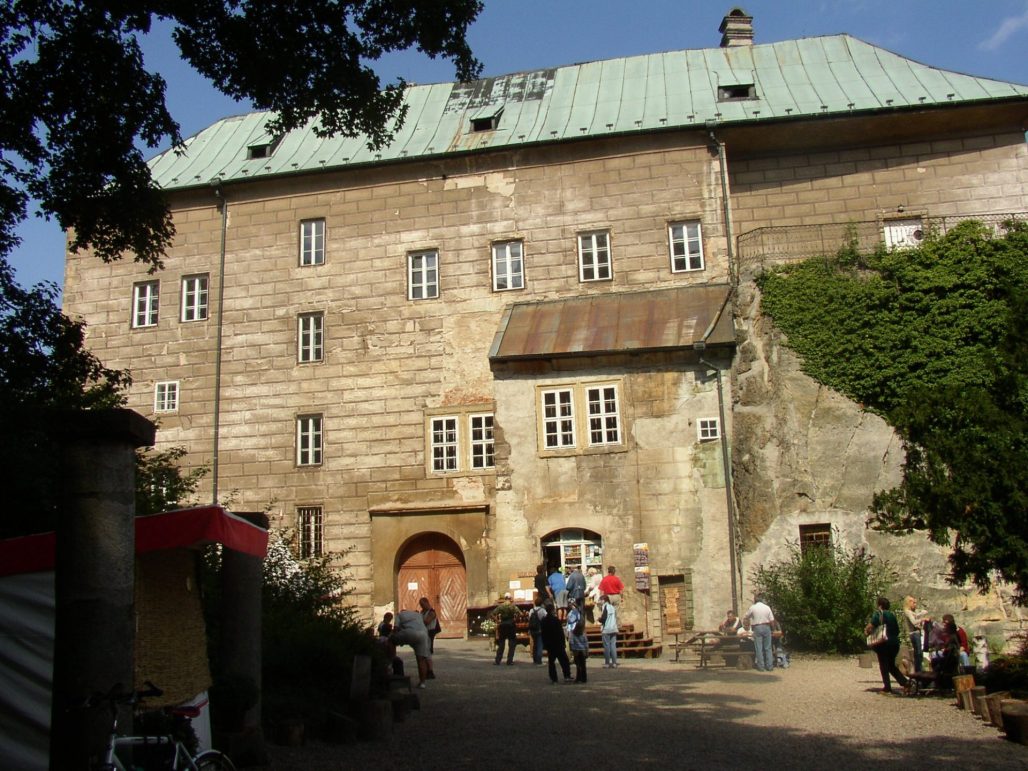
The castle was built over a hole or well that was believed to reach down to hell. Locals had previously tried to cover the hole with stones to keep the Devil at bay. The chapel of the castle was supposedly built over this gateway, though according to legend dark, winged creatures and half-man, half-animal creatures still manage to crawl out of the hole. Inmates were once lowered into the hole to explore it but apparently came back shrieking and looking as though they had aged 20 years.

In addition to leading to hell, an evil alchemist apparently used the castle as his laboratory in the 1600s until he was shot by soldiers in the area trying to put an end to his black magic.
In addition to these creepy tales, UFO sightings, paranormal phenomena, floating ghostly orbs, and items going missing only to reappear in different parts of the castle have also been reported by visitors to the area. Theories abound about the castle including it being a meeting place for members of the occult or being built as a teleportation pad by ancient mages.
Landi Castle
Haunted Castle in Bardi, Italy
Also known as Bardi Castle, this imposing structure was built on a rock of red jasper in the Italian region of Parma’s Ceno Valley. The name Bardi for the surrounding town was named after the last animal in Hannibal’s army, which supposedly died in the city on its way over the Alps to Rome. The Landi family acquired the castle from the Bishop of Piacenza in 1257 and reigned as lord of the hand for centuries. The castle was given up when Italy was unified and many villagers left the area during World War II as the area was a frequent battleground between Nazis and local revolutionaries. Now, the castle is open as a museum for those wanting to explore the history of one of Italy’s oldest and longest-surviving noble families.
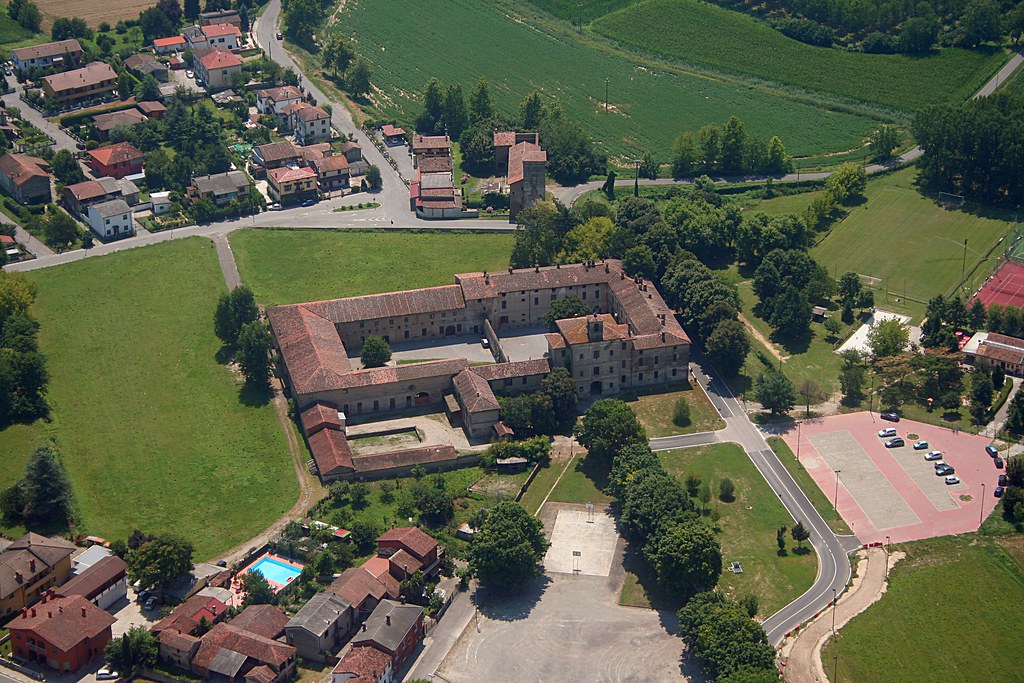
Though the family no longer lives in the castle, there is at least one ghost who still calls the castle home. Not unlike Romeo and Juliet, one of the spirits who haunt the castle was said to be mixed up in a star-crossed love affair. Soleste was the daughter of the castle’s lord and fell in love with Morello, the captain of her father’s guard. When Morello went off into battle, Soleste waited for him to return, but in her horror saw the enemy standard rushing toward the castle’s gate. Delivering her lover dead, she threw herself from the castle battlements. However, Morello was one of the men returning and his soldiers were carrying the enemy’s colors as a way of boasting about their victory. When Morello finds Soleste’s body, he kills himself in grief and wanders the castle looking for his lost love.
Leap Castle
Haunted Castle in Roscrea, Ireland
Leap Castle might be the most haunted place in Ireland, due in part to the bloody history of the structure. Built in the late 1400s by the O’Bannon family, the castle was taken over in the mid-1550s by the notorious O’Carroll clan, who dwelled in the castle for years. In the “Bloody Chapel” of the castle is where Mulrooney O’Carroll and the family’s priest were killed in mid-prayer by Mulrooney’s own brother, which man said placed a curse up the O’Carroll family. The castle passed into the hands of the Darby through marriage and was partially burned in the Irish Civil War of 1922.
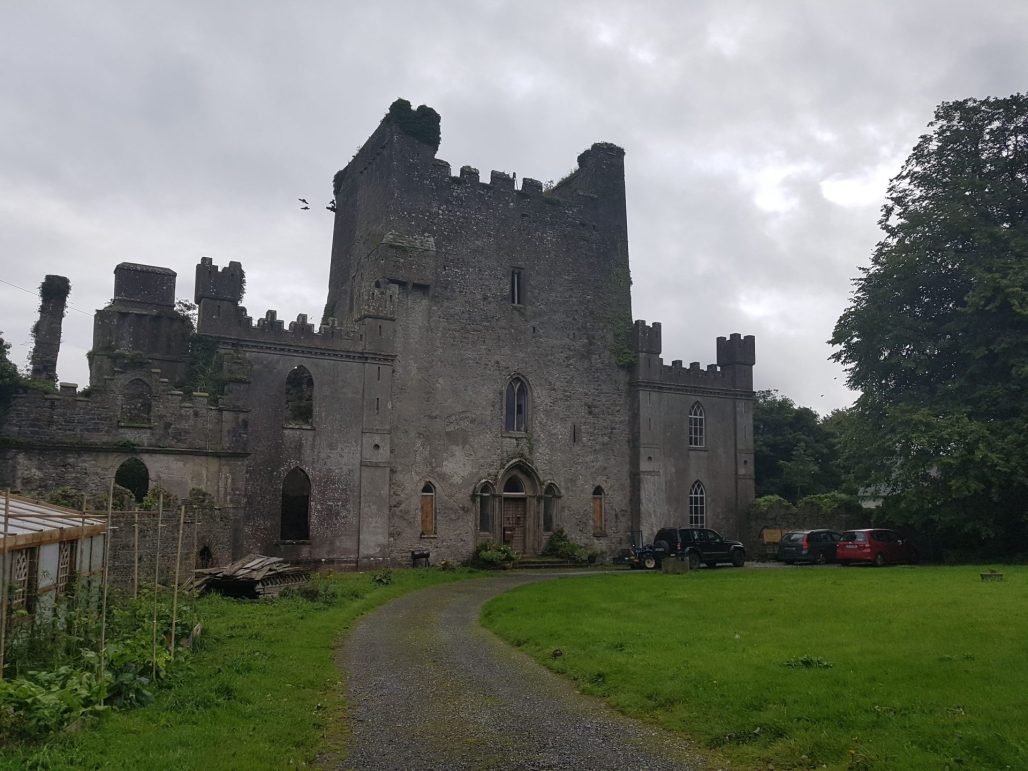
As a result, the castle has been haunted by many violent spirits. One frightening apparition referred to as an “elemental” brings with it a deep sense of fear and appears as a monster with human eyes, reeking of a foul odor to many guests at the castle. The first written account of this evil spirit was in 1909 by Mildred Darby, the lady of the castle. A young girl ghost has been seen in the castle many times and is believed to be the daughter of an O’Carroll who killed herself after her father had her suitor murdered so she would marry another man. Strange lights are also seen at the castle and many local residents report seeing the top floor light up as if thousands of candles were light in the room only to be extinguished a few minutes later.
Moosham Castle
Haunted Castle in Unternberg, Austria
Built in the 1300s by the bishop princes of Salzburg, this castle became infamous for executing beggars, witches, and others who had gone against the church or just found themselves the victims of circumstance. Thousands of young women accused of witchcraft were quickly tried, tormented, and killed in the dungeons and courtyards of this castle, earning it the nickname of the Witches Castle. Germany and Austria were known for being a place where witch hysteria took full hold of people’s imaginations and minds in the Middle Ages, which led to the cruel deaths of many young women.
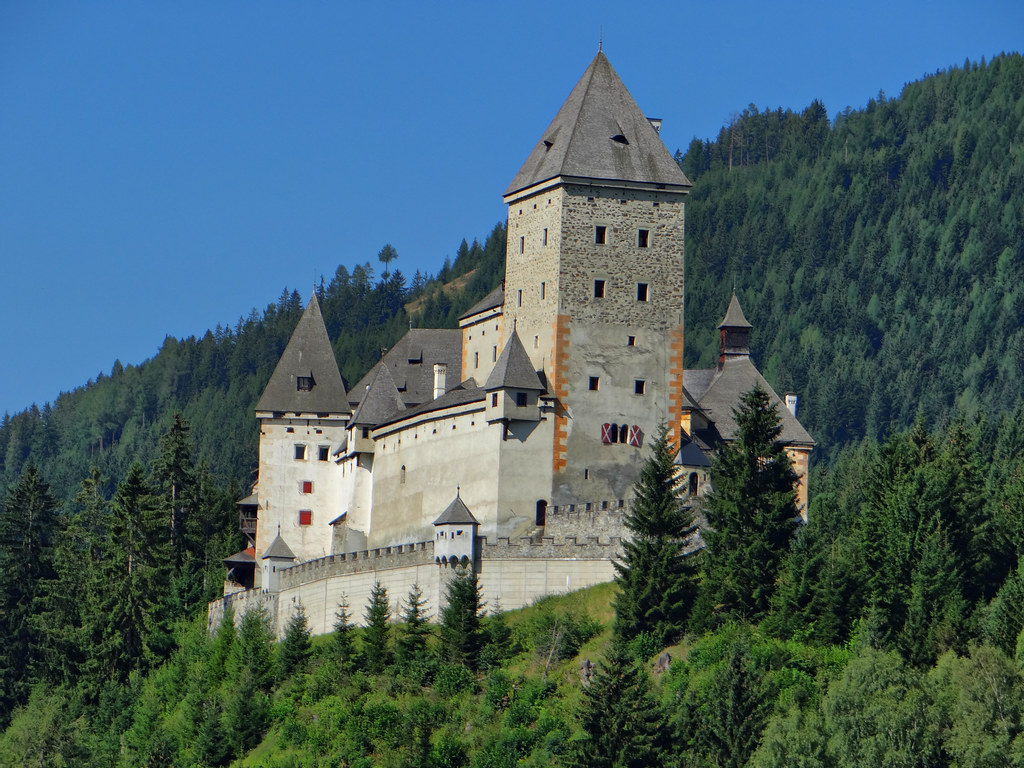
However, apparently, not all of the witches executed there were innocent. A coven of ghost witches is said to haunt the castle grounds, never fully completing their dark ritual. A werewolf is apparently also seen on the castle grounds and for generations mutilated cattle and even human bodies have been found in the nearby village. Numerous villagers were tried and imprisoned during the 1800s as suspected werewolves, but the real wolf was never found. Items in the castle are often rearranged and strange, ghostly noises are heard, predominantly in the dungeon where most of the torture takes place.
Newcastle Castle
Haunted Castle in Newcastle upon Tyne, England
Often referred to as just “the Castle,” this castle kept in Newcastle upon Tyne gave the city its name and remains a prominent local landmark. The most imposing structure in the castle is the Black Gate, a fortified gatehouse dating from the 1100s. The first parts of the castle were constructed as early as 1080 but it wasn’t until 1265 that the castle was complete with its wall, motte, and bailey. Now a major historical site, the castle is owned by the city and used as a library and meeting place among other functions.
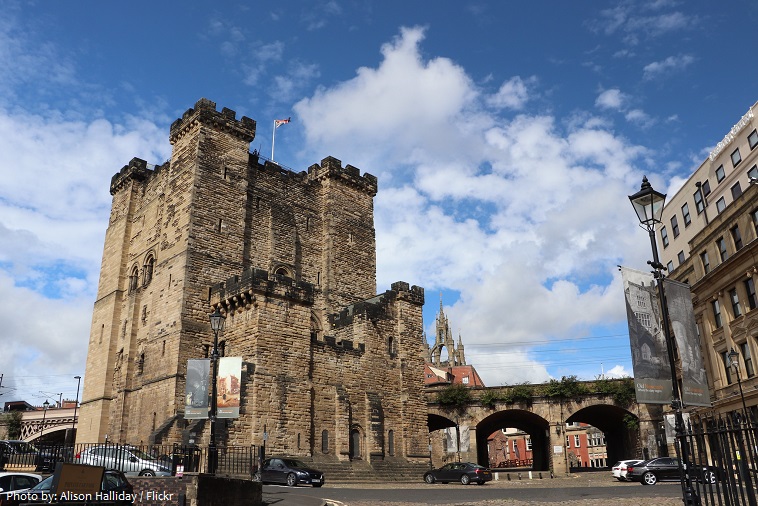
Because of its haunted reputation, the castle hosts Halloween Fest or Ghost Fest yearly as a way of bringing out tourists. One such ghost haunting the castle keep is described as a four-foot-tall black shadow that floats in and out of castle walls. A small child is reputed to haunt the area as well sometimes being seen and other times as an invisible apparition throwing stones, making growling sounds, or biting and scratching visitors.
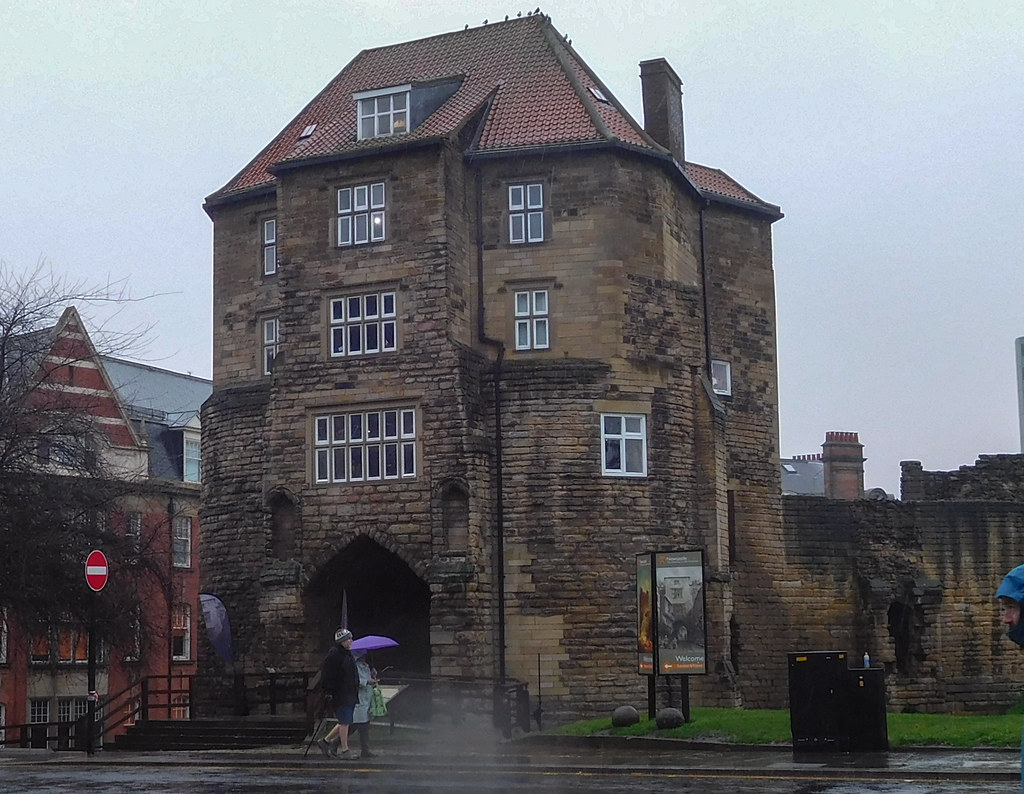
Another castle ghost is the Poppy Girl, a prisoner who was kept in the castle because her family owed money to the local lord. She was apparently beaten to death and possibly raped by knights supposed to be guarding her and now appears with a lingering scent of flowers. Strange chanting noises are heard at night on the chapel steps and an unknown woman haunts the Queen’s Chamber in the castle. Phantom footsteps are also reported throughout the castle.
Predjama Castle
Haunted Castle in Postojna, Slovenia
No one is quite sure when this Slovenian castle was built in the mouth of a cave, but it looks as it does today thanks to renovations made during the Renaissance. The first recorded mention of the castle was in the year 1274 detailing how it was built in the cave mouth for protection. The most famous resident of the castle was a knight known as Erazem Lueger, a robber baron who fled to the castle after killing a high-ranking member of the army of the Holy Roman Empire. Erazem was able to withstand a siege for months in the castle by using hidden tunnels to bring in goods, but was ultimately killed when a cannon was shot up the toilet chute at the castle, killing the knight instantly as he sat on his “throne.”
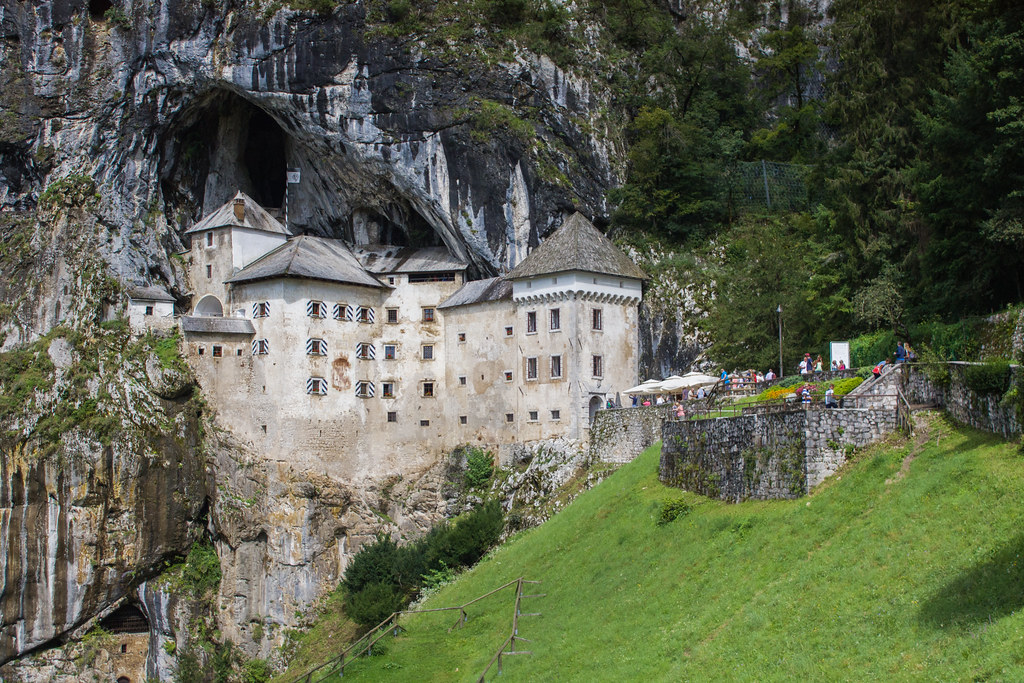
Destroyed once by siege and again by the earthquake, the castle was built back twice with the final construction completed in 1567. In modern times, numerous reports of paranormal activity and ghost sightings have been reported at this castle. Prisoners kept in the castle dungeons were sometimes walled up in their cells and left to starve to death, possibly the reason why so much odd activity is recorded in those dungeon rooms. Footsteps in the snow, voices, and unexplained noises are heard throughout the castle.
Tower of London
Haunted Castle in London, England
Though more famous as a prison and execution location for some of Britain’s most wealthy and royal, many forget that the Tower of London is actually a castle. Though often just referred to as “the Tower,” the actual name of this palace is Her Majesty’s Royal Palace and Fortress. Legend states every king and queen of England must sleep in the Tower the night before their coronation in order to have good luck with their reign. The first parts of the Tower were built during the Norman reign in 1066 though there is evidence of an older Roman fort in the area as well. In addition to being a fortress, the castle was built as a royal palace.

However, elite prisoners were kept in what was originally intended to be a royal residence. Notable historical figures from Elizabeth I to William Wallace, James I of Scotland, David II of Scotland, John II of France, Charles the Duke of Orleans, Edward Seymour, Thomas More, Anne Boleyn, Catherine Howard, Margaret Pole, Thomas Cromwell, Anne Askew, Thomas Cramner, Lady Jane Grey, Sir Walter Raleigh, Guy Fawkes, William Penn, and Rudolf Hess all were imprisoned in the tower at one point or another.
With such a long list of political prisoners, it should come as no surprise that many of those who lived and died in the Bloody Tower are still roaming the grounds there. The most famous ghost is that of Henry VIII’s second wife and Elizabeth I’s mother Anne Boleyn who was beheaded there in 1536. She has been reported as a headless specter and a ghost carrying her own head around the White Tower. The two Princes in the Tower – Edward V and brother Richard, Duke of York – are also seen playing on the Tower grounds. Henry VI, Lady Jane Grey, and Margaret Pole are others who met bloody ends and are still seen roaming the tower. Night staff at the Tower has reported numerous other apparitions and ghostly encounters going back to 1816 in the written record.
Warwick Castle
Haunted Castle in Warwick, England
Sitting on the banks of the River Avon is this medieval castle originally built by England’s first King William the Conqueror around 1068. It was converted into a forty and finally into a country house by the Greville family in the 1600s. The Greville became the Earls of Warwick and lived in the castle until 1978. In addition to being used to house prisoners – including many future kings of England – and being a fortress in times of battle, the castle has been a major tourist attraction ever since Queen Victoria visited it in 1858.
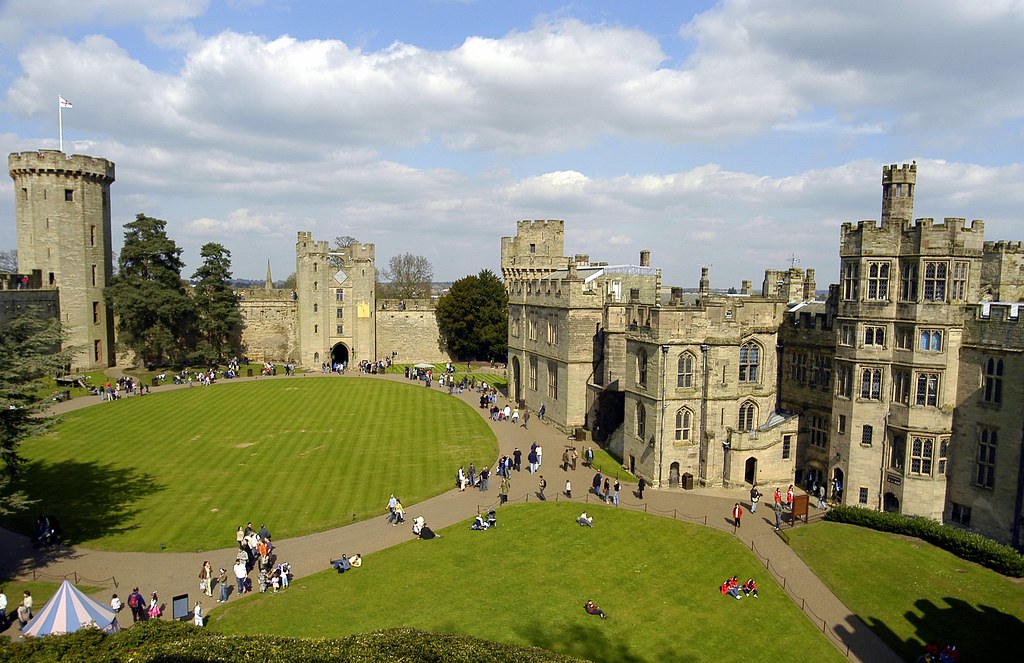
While tourists in the 1800s went to walk in the steps of the Queen, modern tourists often come to Warwick Castle searching for ghosts. The castle has embraced its haunted reputation, even offering a tour based solely on the reputed hauntings there. Sir Fulke Greville is said to haunt the Watergate Tower in the castle after he was murdered by his manservant in 1628- even though the murder took place outside of Warwick in the town of Holborn. Even so, he is so frequently seen in the tower it has been nicknamed the “Ghost Tower.”
The castle’s dungeon takes on a life of its own at night with the spirit of a black dog with glowing red eyes often growling at anyone down there during the evening hours. Lights in the castle turn on and off by themselves, footsteps are heard in empty hallways and occasionally tourists will mistake ghostly servants as re-enactors in period garb when there are no re-enactions taking place at the castle. Adding to the legends, the castle is built on the Ley line stretching from Clopton Hill to Herefordshire. The Ley Line is famous for all of the haunted locations that have cropped up around it across the country.
Dover Castle
Haunted Castle in Dover, Kent, England
Dover Castle, located in Kent, dates back to the 1180s when it was first constructed by King Henry II. However, archaeological evidence suggests that a fortified site had existed here since the Saxon era, and the Roman-era lighthouse within its walls stands as a testament to the site’s long history.
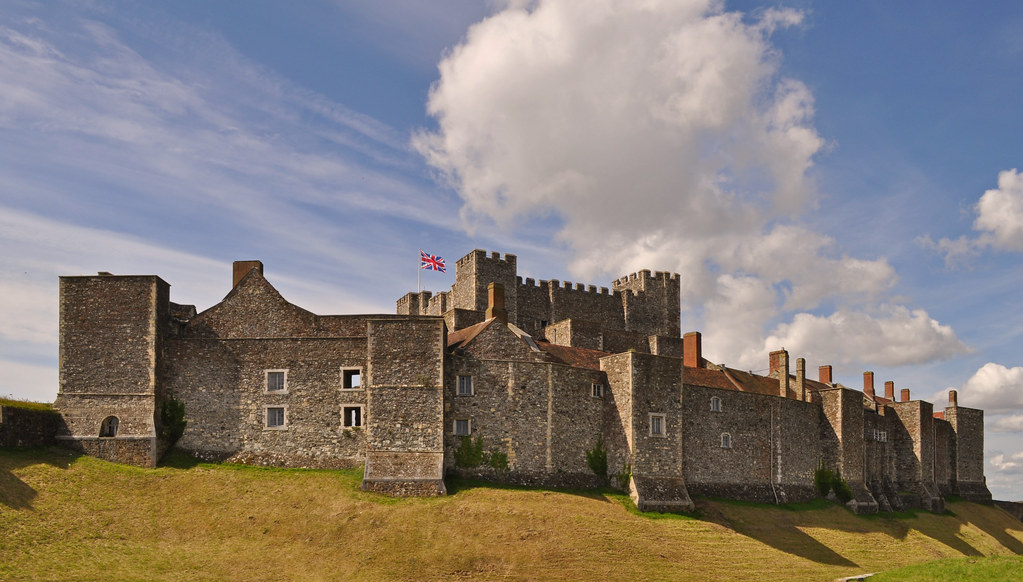
Given its strategic coastal location, Dover Castle has been referred to as the “Key to England” as it served as an effective deterrent against marauding pirates and later Napoleon’s army during the Napoleonic Wars. Furthermore, during World War II, the castle was used as a frontline defense against air and sea attacks and served as the command center of Winston Churchill while he was Prime Minister. Notably, the emergency plans for bringing back the British Army from Dunkirk were devised here in May and June 1940.
Aside from its military importance, Dover Castle is also renowned for its haunted tales. The most popular ghost story is that of the headless drummer boy who was said to have been murdered in pursuit of a large sum of money. Witnesses claim to have seen his spirit walking around the castle grounds late at night, often accompanied by bangs of his drum. Furthermore, visitors have reported sightings of a woman wearing a red dress within the keep and a cavalier near the entrance. In addition, people have reported hearing disembodied voices and cries for help from within the secret underground tunnels where World War II soldiers are said to still be present. Furthermore, sudden drops in temperature are commonly encountered in certain parts of the castle. On one occasion, a camera crew passing by heard a scream coming from above which appeared as if someone had thrown themselves off the battlements.
Truly, Dover Castle’s rich history creates an atmosphere filled with intrigue and mystery, providing endless stories and legends that will continue to fascinate for years to come.
Stirling Castle
Haunted Castle in Stirling, Scotland
Stirling Castle is widely recognized as one of the most significant fortresses in the country’s storied history. First used as a strategic stronghold as early as the 12th century, the castle has seen many sieges over the centuries, including multiple attempts to seize it during the Wars of Scottish Independence – with the final attempt coming in 1746 when Bonnie Prince Charlie made an unsuccessful bid to take the fortress. Its importance is further highlighted by the fact that many Kings and Queens have been crowned at Stirling, with the notable exception of Mary, Queen of Scots who held her coronation there in 1542.

Though it may now stand as a testament to times gone by, many claim that Stirling Castle still hosts supernatural activity today. Numerous reports from staff and visitors alike state that they have encountered the ghost of a Highland soldier wearing a full traditional outfit, including a kilt, walking through the grounds before disappearing suddenly. This same figure was even captured on film in 1935 by an architect performing surveying work prior to commencing building works.
Another frequently sighted figure is the so-called Green Lady, said to have been a servant to Mary Queen of Scots who perished while saving her life from a fire that had started next to her bed. It is believed that her spirit has inhabited the castle ever since. It is also said that Mary herself returns to the premises as the so-called Pink Lady – though some contend that she is actually a widow desperately searching for her lost husband who died in battle.
Finally, mysterious banging sounds have been heard in the Governor’s Block – said to emanate from one of the unoccupied chambers up above. Are these noises being made by spirits of old, or simply echoes of history left behind? Whatever the case might be, Stirling Castle promises adventure each time you visit.
Tantallon Castle
Haunted Castle in East Lothian, Scotland
Tantallon Castle is a mid-14th-century castle situated on a promontory overlooking the Firth of Forth, east of North Berwick in East Lothian. It was originally built by the Earl of Angus – later the Red Douglases – and stands on a cliff flanked by Bass Rock to the east and North Berwick Law to the west. Throughout its history, it has been damaged several times, most notably during Oliver Cromwell’s invasion in 1651. This destruction has left much of the structure in ruins, but it still stands as an impressive reminder of medieval Scottish architecture.

Tantallon Castle has been in the possession of the Douglas family since 1365, when King David II granted it to the 6th Earl. After being surrendered to King James IV due to the 11th Earl’s rebellion in 1491, the castle was left unoccupied for almost a century until George Hume of Pinkie House was granted the castle by King James VI in 1591. The Hume family held ownership until 1651, when Oliver Cromwell’s army destroyed the castle, and its stones were used to build the nearby Yellowcraig House.
Today, Tantallon Castle is owned by Historic Scotland and hosts various events throughout the year. Visitors can explore the ruins of the castle and surrounding grounds, including the nearby Bass Rock which offers spectacular views of Tantallon and the surrounding area. The castle has also been featured in several films and television shows, such as Disney’s Brave (2012) and BBC’s Outlander (2008).
Despite its external grandeur, there are many who believe that Tantallon Castle is cursed. Legends speak of a powerful creature or spirit roaming its corridors at night, supposedly a ghostly lady known as Ortala the Black Witch. It is said that she was once the beautiful mistress of a Scottish Earl but jealousy led him to burn her alive inside the castle, resulting in a curse that has plagued the castle ever since. To this day, her pitiful wails are still reported to echo through its walls. Other tales tell of a headless ghost that rises from the castle gates at night. These stories further add to the mystique of this remarkable structure, leaving visitors both awed and filled with trepidation.
Dunnottar Castle
Haunted Castle in Stonehaven, Scotland
Dunnottar Castle has a long and storied history, with a legacy that is both impressive and dark. Situated on the North East coast of Scotland, this castle has been a defensive power since it was first built over 1300 years ago by the Pictish people before being destroyed by the Vikings in a bloody attack. It was later taken by King Edward I before William Wallace attacked it, and ultimately it was destroyed again during Oliver Cromwell’s attack.

Throughout its turbulent past, Dunnottar Castle has also become renowned for its haunted reputation, with tales of ghostly apparitions and eerie whispers leaving visitors trembling in fear. From the young girl who wears a tartan skirt, to the tall soldier of Scandinavian descent, to the cries of pain and terror believed to be coming from the Whig’s Vault, this castle speaks of centuries of torment and tragedy.
The true legacy of Dunnottar Castle may be shrouded in mystery, but one thing is certain – it is a powerful reminder of our shared history and of the struggles endured throughout time.
